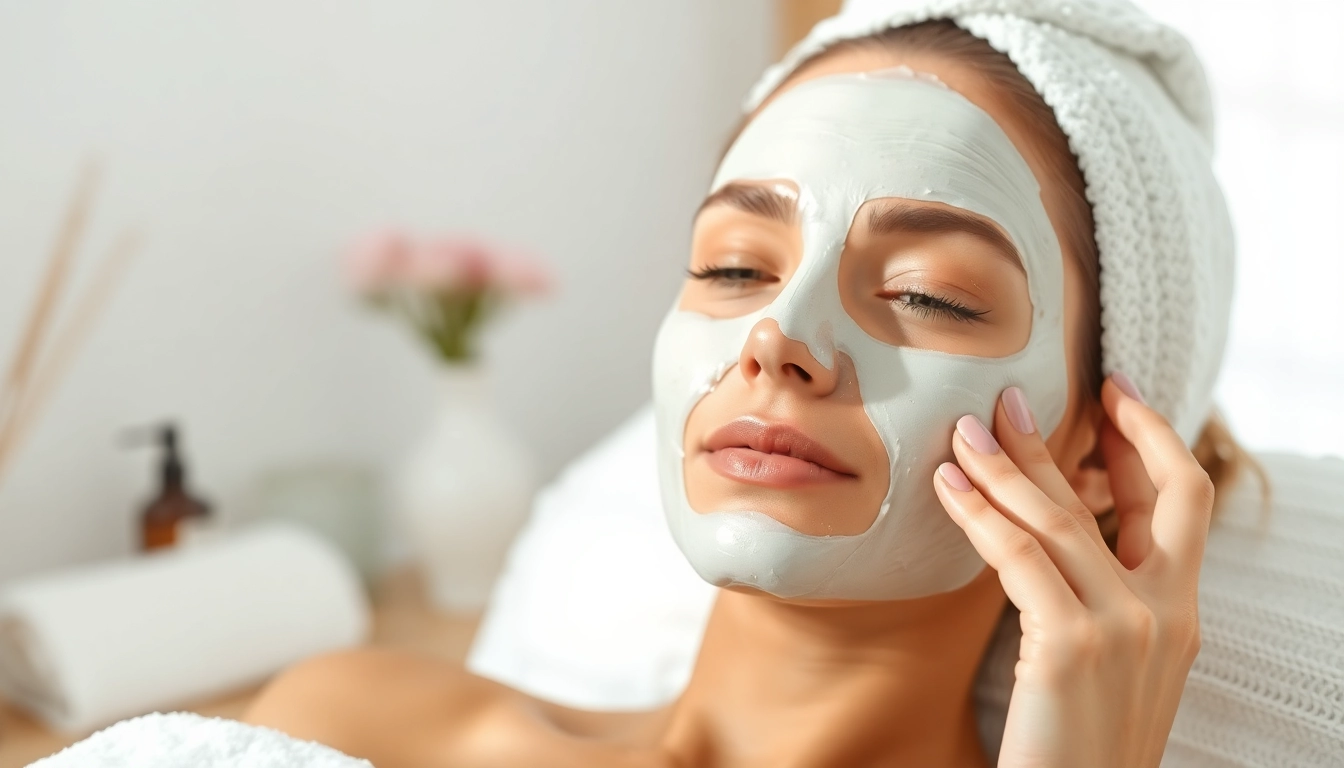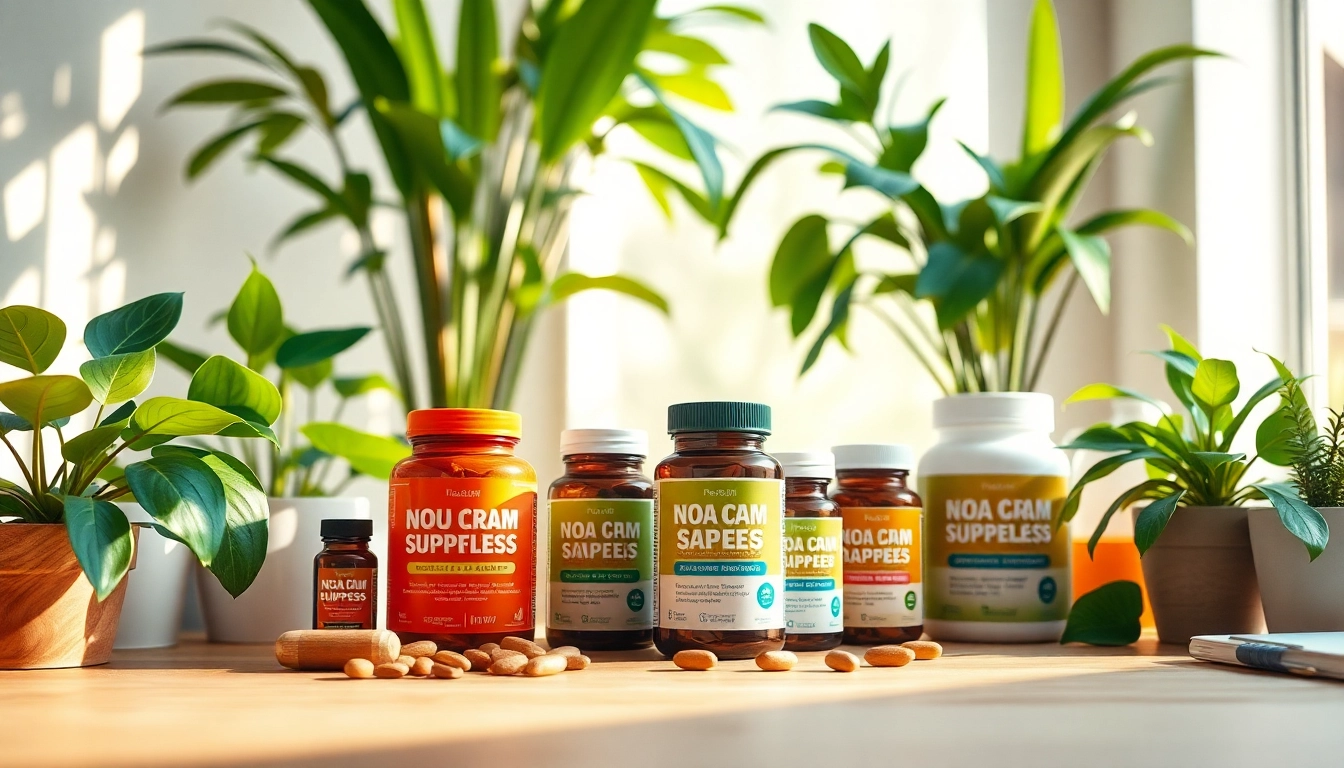Understanding Face Masks
What is a Face Mask?
A face mask is a skincare product designed to be applied to the face for a specified period, allowing active ingredients to penetrate and benefit the skin. The primary goal of a face mask is to enhance the skin’s appearance and provide targeted treatments for various skin concerns. These masks can either be rinse-off or peel-off, and they come in various forms, including sheet masks, clay masks, gel masks, and cream masks. The right face mask can make a significant difference in your skincare routine by delivering potent ingredients directly to your skin’s surface.
Types of Face Masks Available
Face masks come in a variety of forms, each targeting different skin issues. Here’s a detailed look at the main types:
- Sheet Masks: Made from fabric or paper, these masks are soaked in serums and are designed to fit snugly on the face, providing intense hydration and treating various skin conditions.
- Clay Masks: Ideal for oily or acne-prone skin, clay masks draw out impurities and excess oil, helping to clear pores and reduce breakouts.
- Gel Masks: Lightweight and soothing, gel masks are excellent for hydration and calming sensitive skin. They often contain ingredients like aloe vera and hyaluronic acid.
- Cream Masks: Rich and emollient, these masks are perfect for dry or mature skin, as they nourish and hydrate while targeting signs of aging.
- Peel-Off Masks: These masks bond to the skin’s surface and are peeled away after drying, offering deep cleaning and exfoliation to remove dead skin cells and impurities.
How Face Masks Benefit Your Skin
Face masks offer numerous benefits, acting as a concentrated treatment to address specific skincare needs:
- Hydration: Many masks are formulated with hydrating ingredients, allowing for a deep infusion of moisture into the skin.
- Exfoliation: Some masks help slough away dead skin cells, promoting a brighter and smoother complexion.
- Pore Tightening: Clay and peel-off masks can minimize the appearance of enlarged pores by removing impurities.
- Soothing Irritation: Masks containing calming ingredients can reduce redness and irritation, making them ideal for sensitive skin.
- Boosting Radiance: Regular use of face masks can improve skin texture and radiance, leading to a more youthful appearance.
Choosing the Right Face Mask for Your Skin Type
Identifying Your Skin Type
Before selecting a face mask, it’s essential to understand your skin type. Generally, skin types are categorized into four main categories:
- Oily Skin: Characterized by excess sebum production, oily skin may require masks that control oil and prevent breakouts.
- Dry Skin: Lacking moisture, dry skin benefits from hydrating masks that nourish and replenish moisture levels.
- Combination Skin: Featuring both oily and dry areas, combination skin needs masks that balance oiliness while providing hydration.
- Sensitive Skin: Prone to irritation, sensitive skin should be treated with gentle, soothing masks that contain minimal ingredients.
Ingredients to Look For
When selecting a face mask, it’s crucial to pay attention to the ingredients. Here are some beneficial components to consider based on your skin type:
- Hyaluronic Acid: An excellent hydrating ingredient, suitable for all skin types.
- Salicylic Acid: Ideal for oily and acne-prone skin, helping to unclog pores.
- Glycolic Acid: An alpha-hydroxy acid that aids in exfoliation for brightening and smoothing textures.
- Aloe Vera: Great for sensitive skin, known for its soothing properties.
- Charcoal: A popular ingredient in detoxifying masks for drawing out impurities from the skin.
Common Mistakes When Selecting Face Masks
Choosing the wrong face mask can lead to disappointing results. Here are some common pitfalls to avoid:
- Ignoring Skin Type: Using a mask unsuitable for your skin type can exacerbate existing problems.
- Overuse: Applying masks too frequently can strip the skin of its natural oils.
- Neglecting Ingredients: Not reading the ingredient list can lead to unintended reactions, especially if you have sensitive skin.
Application Techniques for Effective Use
Step-by-Step Guide to Applying a Face Mask
To maximize the benefits of your face mask, proper application is key. Follow these steps for optimal results:
- Cleanse Your Face: Start by thoroughly cleansing your skin to remove dirt and makeup.
- Exfoliate (Optional): Exfoliating may help the mask penetrate better, especially if it’s a treatment mask.
- Apply the Mask: Use clean fingers or a brush to apply an even layer of the mask, avoiding the eye area.
- Relax: Allow the mask to sit for the recommended time—usually between 10 and 20 minutes.
- Rinse Thoroughly: Remove the mask with lukewarm water, gently massaging the skin as you rinse.
- Moisturize: Follow up with your usual skincare routine, including a moisturizer to seal in the benefits.
Best Practices for Maximizing Results
Here are some expert tips for achieving the best results from your face masks:
- Choose masks based on your skin’s current needs rather than a one-size-fits-all approach.
- Incorporate masks into your skincare routine consistent with your skin goals (e.g., hydrate, purify, exfoliate).
- Consider combining treatments; for instance, using a hydrating mask during a dry spell or a purifying mask during hormonal breaks.
- Store masks in a cool place; some masks can offer an additional soothing effect if chilled before use.
Frequency of Use: How Often Should You Apply a Face Mask?
Understanding how often to use a face mask can depend on the type of mask and your skin’s needs:
- Hydrating Masks: These can typically be used 1-3 times per week.
- Exfoliating Masks: Depending on the potency, these can be used once a week to avoid irritation.
- Clay Masks: Generally suitable for oily skin, 1-2 times per week is recommended.
- Detox Masks: Regular use may help maintain clearer skin but be cautious with frequency.
DIY Face Mask Recipes
Natural Ingredients for Homemade Face Masks
Many natural ingredients can serve as excellent bases for homemade face masks. Consider these options:
- Honey: Antibacterial and soothing, perfect for hydrating and healing.
- Oats: Gentle exfoliators that help soothe and calm irritated skin.
- Yogurt: Contains lactic acid to gently exfoliate and hydrate.
- Avocado: Packed with healthy fats and vitamins, ideal for dry skin.
- Cucumber: Refreshing and hydrating, good for sensitive skin.
Simple Recipes for Glowing Skin
Here are some easy DIY recipes to try at home:
- Honey & Oat Mask: Mix 1 tablespoon of honey with 1 tablespoon of ground oats. Apply and leave on for 15 minutes before rinsing.
- Aloe Vera & Avocado Mask: Mash half an avocado and mix with 2 tablespoons of aloe vera gel. Apply for 20 minutes to hydrate and soothe.
- Yogurt & Cucumber Mask: Blend half a cucumber and mix with 2 tablespoons of yogurt. Leave on for 15-20 minutes for a refreshing treatment.
Safety Tips for DIY Mask Applications
While DIY masks can be beneficial, always remember to:
- Patch test new ingredients to check for allergic reactions.
- Use fresh, high-quality ingredients to avoid skin irritations.
- Avoid using masks with ingredients that may be comedogenic for your skin type.
- Don’t leave DIY masks on for extended periods; follow recommended application times.
Measuring the Effects of Face Masks
Indicators of Success: What to Look For
To assess whether a face mask is effective, pay attention to how your skin responds:
- Increased Hydration: If your skin feels softer and more supple after use, that’s a good indicator of success.
- Improved Texture: Look for smoother skin, fewer blemishes, and a more even tone over time.
- Reduced Breakouts: Notice if your pores appear less congested and breakouts decrease after consistent use.
- Radiance: A mask that achieves a glowing complexion is a good sign it’s doing its job.
Combining Face Masks with Other Skincare Products
Face masks can be part of a comprehensive skincare routine. To maximize their effectiveness, consider these combinations:
- Apply a mask after cleansing and before applying serums and moisturizers to lock in benefits.
- For instance, follow a clay mask with a hydrating serum or oil to replenish moisture.
- Use exfoliating masks as a precursor to subsequent skincare steps for improved product absorption.
Expert Reviews: Top Rated Face Masks in 2023
Here are some of the most highly reviewed face masks of 2023 based on effectiveness and consumer feedback:
- Drunk Elephant T.L.C. Sukari Babyfacial: This intensive mask is celebrated for its powerful exfoliating properties.
- Origins Clear Improvement Active Charcoal Mask: Known for its capability to draw out toxins and impurities.
- Laneige Water Sleeping Mask: A cult favorite for its hydrating and revitalizing overnight benefits.
- SK-II Facial Treatment Mask: Highly praised for providing a glowing complexion and intensive hydration.



